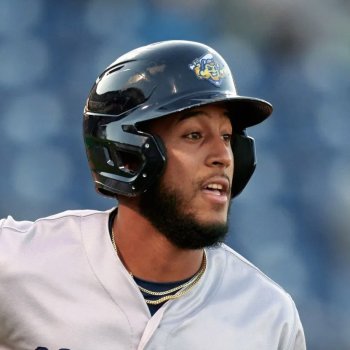
Twins Video
Kohl Stewart Not Added to 40-Man
https://twitter.com/RodneyE77330908/status/936985378304745472
It was a little surprising not to see Kohl Stewart’s name on the team’s list of additions to the 40-man roster. Stewart, the former fourth overall pick, signed for $4.544 million when he was selected in the 2013 Draft. That’s a lot of money invested in a player who could end up being selected by another organization in the Rule 5 Draft. However, he was picked under the previous front office regime.
As a pitching prospect, Stewart has yet to put it all together. In high school, he was a two-sport star with a Division I scholarship to play quarterback. He has been over two years younger than the competition at every minor league stop, so he has been facing older players. That being said, his strikeouts haven’t ever shown up and he still has things to prove.
If a team wants to take a flyer on him in the Rule 5 Draft, they could try to hide him in their big league bullpen. He’s only made three relief appearances in his entire professional career. Even if a team picks him, I think he will end up back in the Twins organization. Stewart isn’t ready to be on a big league roster for the entire season.
Joe Mauer Extension
https://twitter.com/StevoFromSD/status/937866011184914432
Here at Twins Daily, there has been a lot of talk about who the Twins should offer extensions to this off-season. There is a young core of players who are going to get expensive. Joe Mauer and Brian Dozier both will see their contracts expire at the end of 2018. This leaves the front office with some decisions to make about the veteran leadership around their young core.
I believe Mauer will finish his career in a Twins uniform. At this point in his career, I don’t know if it make sense to sign him to a four-year deal. I also don’t know if he is going to want to play for another four seasons. He has a young family and a life outside of baseball and there are other opportunities he could pursue. On Twitter, I wondered out loud if he would be open to a Tim Wakefield-type of contract. Keep him on one-year contracts as long as the team and the player agree with him playing.
When it comes to the 3,000 hit mark, Mauer is going to need to have quite the stretch. Since 2014, he’s averaged 143 hits per season. At that rate, he wouldn’t crack the 3,000 hit mark for another seven years. He would be in his age-42 season so that seems like it will be an uphill climb.
Free Agent DH Options
https://twitter.com/neilnagle22/status/938231800157044737
Eric Hosmer and JD Martinez are the two players who are going to make a lot of money this off-season. MLB Trade Rumors ranks Martinez as the second best free agent with an estimated six-year, $150 million contract. Hosmer ranks as the number three free agent with an estimated six-year, $132 million deal. I think if the Twins are going to spend that kind of money it would be in the club’s best interest to spend their funds on pitching.
There is another tier of designated hitter-type players who could fit better with the Twins. Carlos Santana is a name that has been thrown around but plenty of other teams would be interested in his services as well. According to MLB Trade Rumors, he could sign in the $45 million range on a three-year contract. Some of the market will begin to unfold after Ohtani picks the club where he is going to sign.
Adding More Pitching
https://twitter.com/jzenk42/status/938546916245278722
Spending money on free agent pitchers isn’t always the smartest investment. Pitchers like Yu Darvish and Jake Arrieta are going to command multi-year contracts for north of $100 million. Both players are in their early 30’s which would put them in their late 30’s before their contract would expire. This usually results in some dead money at the end of the deal. As players age further into their 30’s, they lose some effectiveness.
Falvey and Levine were a little surprised by the Twins being in contention during their first year on the job. With that being said, I think they want to make a splash this off-season. They are going to go hard after Darvish to try to lure him to Minnesota. If that doesn’t work out, I could see them packaging multiple prospects to go after the likes of Jake Odorizzi or Gerrit Cole. Nick Gordon would likely need to be a centerpiece of that kind of trade. The front office might be fine with dealing him after Jorge Polanco’s emergence in 2017.
Was leaving Stewart off the 40-man a mistake? Should Mauer get an extension? What DH could the Twins sign? Do free agent pitchers make sense for the Twins? Leave a COMMENT and start the discussion.
MORE FROM TWINS DAILY
— Latest Twins coverage from our writers
— Recent Twins discussion in our forums
— Follow Twins Daily via Twitter, Facebook or email
— Become a Twins Daily Caretaker






Recommended Comments
Join the conversation
You can post now and register later. If you have an account, sign in now to post with your account.
Note: Your post will require moderator approval before it will be visible.